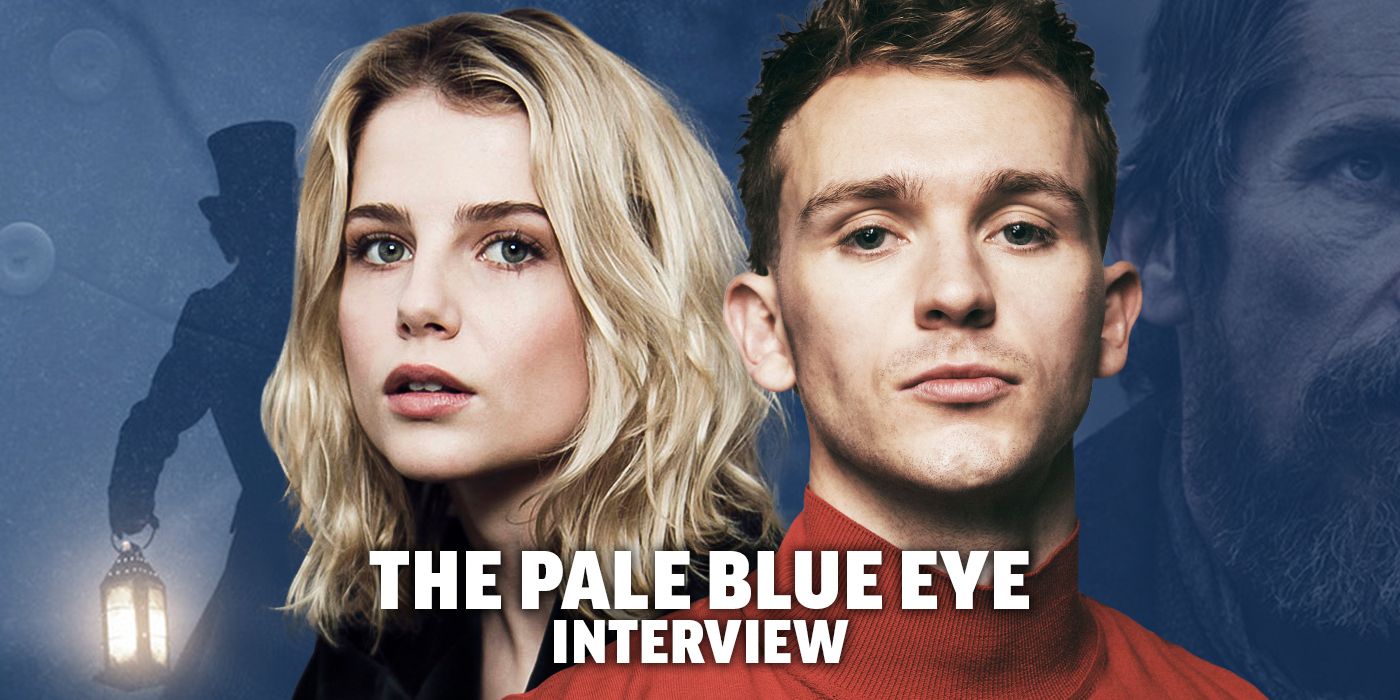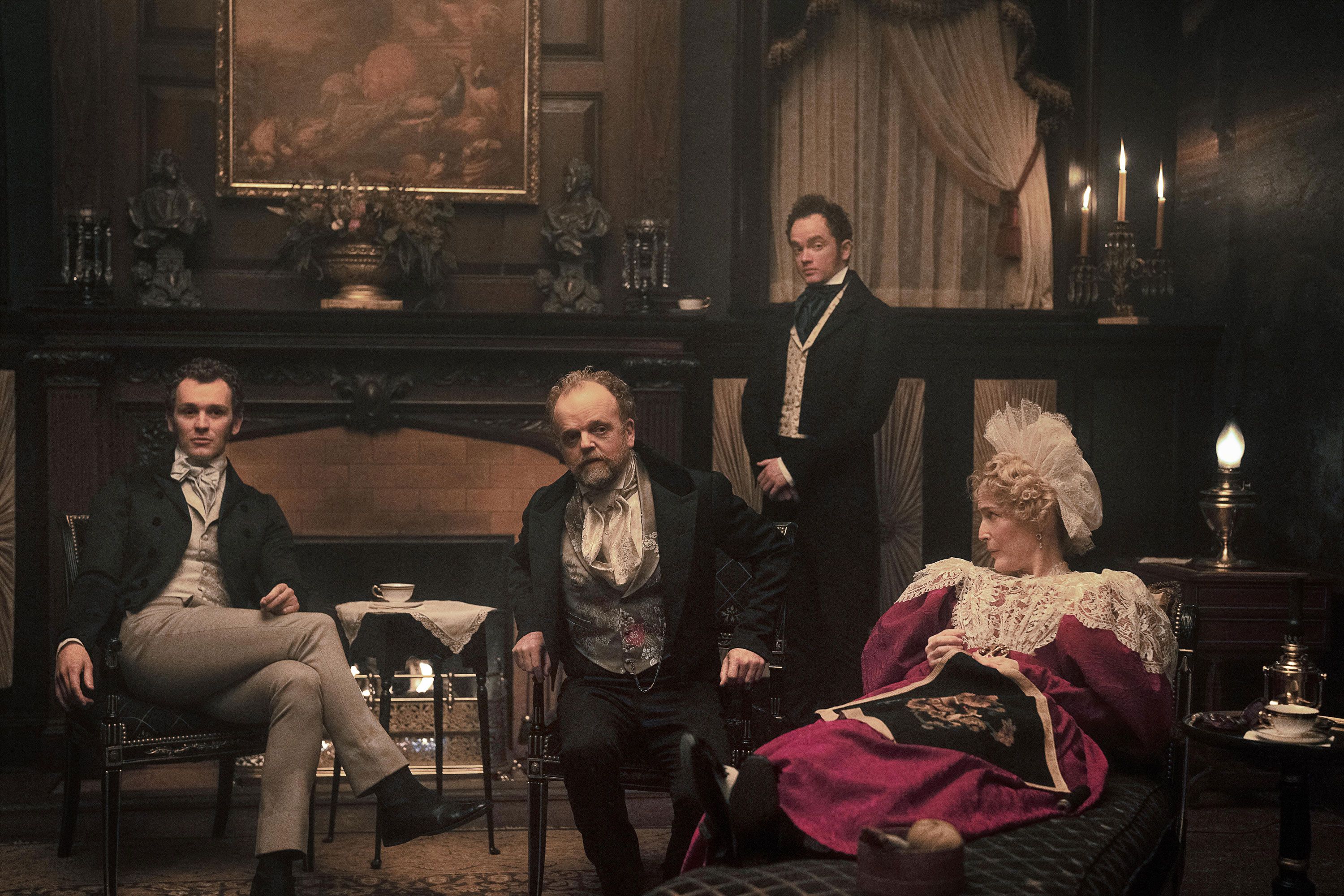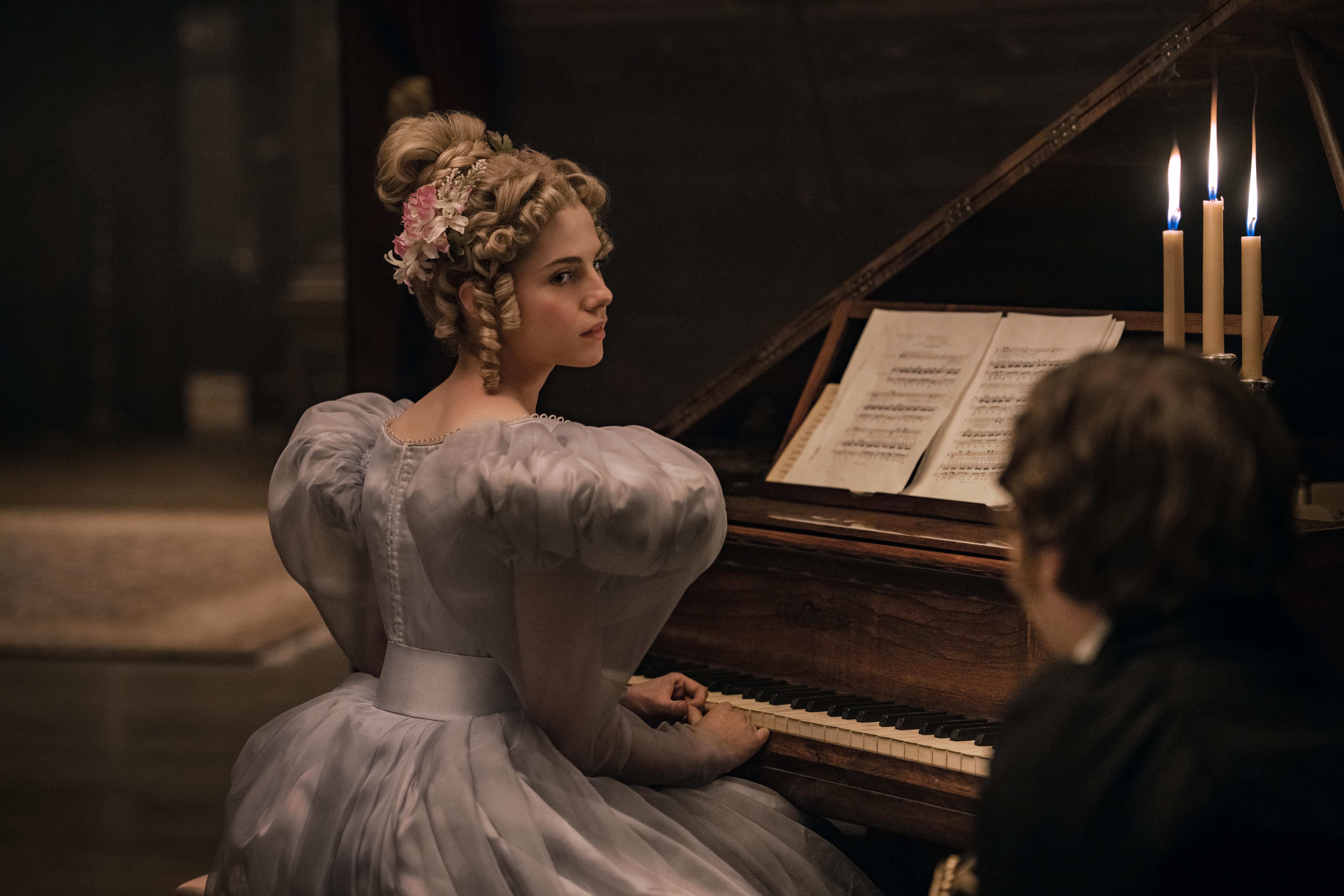[Editor's note: The following contains spoilers for The Pale Blue Eye.]Performing rituals that require a sacrifice in order to lengthen one’s own life is plain old wrong, but The Pale Blue Eye stars Lucy Boynton and Harry Lawtey were challenged to put themselves in the Marquis children’s shoes to fully understand why they’re willing to go that far to cure Lea (Boynton) of her affliction.
The adaption of the Louis Bayard novel sees Christian Bale’s Augustus Landor brought to West Point to investigate not the death of a cadet, but rather, the odd thing that happened after the body was brought to the morgue. The deceased cadet’s heart was cut out and taken. Ultimately it’s revealed Lea, Artemis (Lawtey), and their parents (Gillian Anderson and Toby Jones) are the responsible parties, taking the heart to perform a ritual that will help cure Lea of a condition that dooms her to a short life.
While the Marquis family wasn’t responsible for that cadet’s death — that crime was committed by Landor himself — they do ultimately reach a point where they’re willing to take another life in order to save Lea’s. How exactly does one hit the point where they’re willing to kill? That’s what I discussed with Lawtey and Boynton during our Pale Blue Eye interview.
Before we get to the witchy and gory, Lawtey offered some insight into the preparation he did to fully understand how Artemis is feeling as a West Point cadet:
“A lot of the research that I did that I thought was relevant to the backstory was actually kind of in depth research into West Point itself as an institution and working out what that institution represented in this time and how it affected the cadets that train there, and the type of personalities they were attempting to breed there and what their drives and motivations were. Once you have an understanding of that, it told me so much about the kind of inner life and the pressures that Artemis may have been under.”
As for Boynton, that prep focused more on Lea’s home life and how she carries herself in public versus with her family:
“Mine was more local to the family and the home dynamic between all of them, and trying to work out Lea's trajectory towards — we find out very early on in the film that she's battling with this illness that very much defines how she is, but also therefore informs how she wants to be presented and how she tries to behave in public and around people versus with her family. And so I was trying to get to the origins of that and working out a timeline trajectory in a more analytical way than I usually would. Usually it's kind of instinct or emotions-based backstory, and this was much more technical, analytical timeline in order to then find out where we are just before the film starts and then let that inform the character’s trajectory.”
Boynton continued by explaining how Lea’s darker leanings impacted that backstory work:
“Then that becomes a much more invested version of that, of when illness and confronting the constant threat of death turns into, ‘I will do anything to not have to face it,’ which turns into the extreme of bartering for your life and the dark depths you're willing to go to in order to do that. And at the end of the day, I think that is a kind of justified fight to live, but it was working out when she started realizing that there was a path to go down that she hadn't seen before, and that she therefore kind of pulls her family along as well, and they all become complicit in this dark road.”
Of course, that dark road ends in disaster for the Marquis children. Even with the basement aflame, Lea refuses to end the ritual, and it costs her her life. Then, even knowing his sister is long gone, Artemis refuses to leave her. While Landor manages to get Poe (Harry Melling) and Mrs. Marquis out of the room, Artemis just sits with his sister's body as the burning building crumbles on top of him.
How does one even begin to tackle a scene in which they must justify a character choosing to succumb to a hopeless situation? Here’s how Boynton looks at it:
“I think the joy is that you don't have to explain them in a way, so you really more earnestly get to live in it, which is much easier when, as Harry was saying, the set piece is so alive and when you have real flames surrounding you. It's easier to get to that level of intensity. We also shot that at the end of the filming schedule, so by that point, you're so entrenched in understanding the stakes for your character and how crucial it is that this moment, that this ritual is carried out. It is literally life and death, and when a person is cornered into that, I think you become so extreme, and you are clutching at any possibility of hope. And I think that's the most poignant element of it, that even in these dire moments where the audience can see that all odds are against them, there is that hope that keeps fueling all of those characters and that's where I think you can find an emotional access to all of them.”
Eager to hear more from Boynton and Lawtey about their experience working on The Pale Blue Eye and filming that final scene? Be sure to catch our full conversation in the video at the top of this article! You can also watch my interview with Bale and Melling below:



